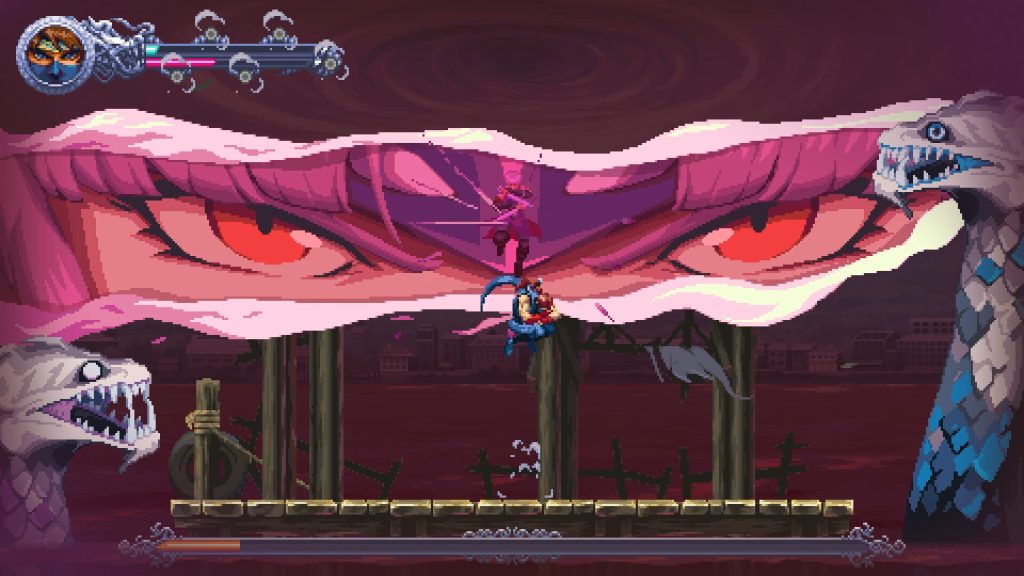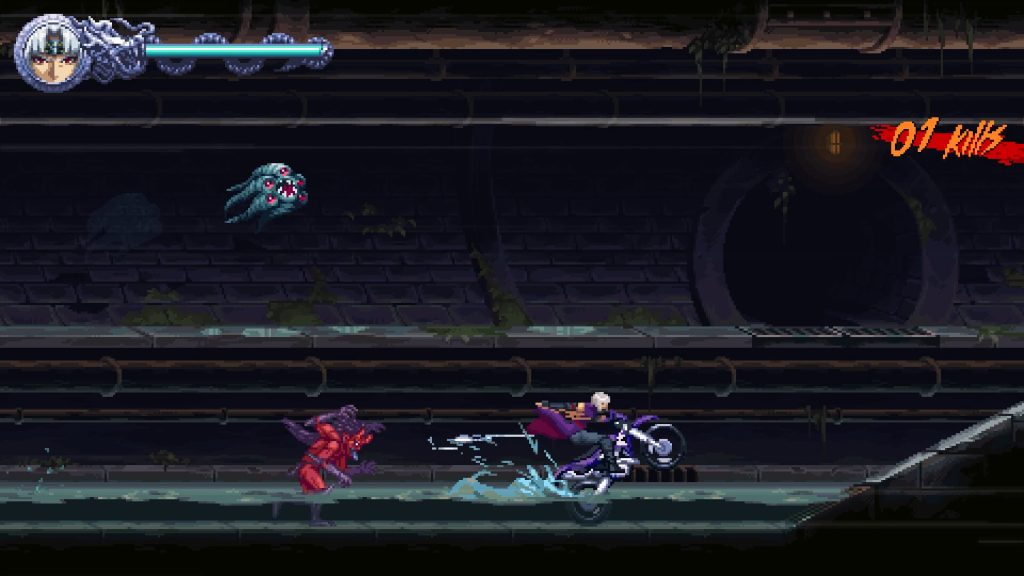NINJA GAIDEN: Ragebound – Everything You Need to Know
Ninja fans are eating well in 2025. Fresh off the back of Assassin’s Creed: Shadows’ Japanese subterfuge fantasy is the 2D side-scrolling return of Shinobi in Art of Vengeance. More iconic than Shinobi, arguably, is Ninja Gaiden, and with not-one-but-three Ninja Gaiden games coming (or already here) this year, the future’s looking bright for what is one of the most legendary series ever committed to video games. Ninja Gaiden: Ragebound is a return to the original trilogy’s side-scrolling action, imbued however with modernisation. This rundown proves Ninja Gaiden: Ragebound isn’t mere nostalgia bait by highlighting all there is to know before you buy.
Where it fits, chronologically
[embedded content]
Cast your mind back, if you can, to 1988. Ryu Hayabusa, learning of his father’s death, journeys to a retro-future United States on a quest for bloody vengeance. Whilst he’s whipping katanas Stateside during the events of Ninja Gaiden I through III he’s left Hayabusa Village in the lurch; a mysterious portal opened the very night Ryu left, with demons pouring out into the world. With Ryu preoccupied, his disciple Kenji Mozu – Ninja Gaiden: Ragebound’s protagonist – steps up to protect the village from ransacking demonic threat. The unfolding events in Ragebound then, it seems, take place chronologically alongside Ryu’s exploits in 1988’s Ninja Gaiden.
There is a prologue
Getting players up to speed before beginning Ragebound’s story is a playable prologue whereby command of Ryu’s father is served, as is his death. Ninja Gaiden, as a series, trail-blazed between-level cutscenes; cinematography, like 1988’s original intro scene with Ryu Hayabusa’s father in spectacular duel, hadn’t been seen in video games to this degree before. Ninja Gaiden: Ragebound allows players to experience these moments in-game, the events leading up to Hayabusa senior’s death and Hayabusa junior’s subsequent abscondment.
Extreme difficulty
A huge part of Ninja Gaiden’s legacy – in arcades, on the NES, it’s turn-of-the-century 3D departures – is its brutal difficulty. 8-bit and 16-bit sidescollers, especially, were punishing in their challenge, demanding surgically precise timing to slice through encounters. These skills, perhaps, might be lost on modern gamers but should your dexterity be up for it Ninja Gaiden: Ragebound ships with an extreme difficulty mode, unlockable once levels are completed.
Base difficulty not too challenging
Make no mistake, Ninja Gaiden: Ragebound won’t be an easy game to complete but, in keeping with the title’s ethos, it combines the series’ infamous challenge with modernisation via snappy controls and tight level design. Ragebound’s fluid action is intuitive. As a result, any mistakes made will be due to player error, such is the game’s responsiveness. Once level layouts are memorised and timings are committed to muscle memory, even gamers with modest skills will be able to avoid feeling overly punished.
Gameplay and combat design
Progression in Ragebound is structured in traditional levels, the completion of which demands a combination of perfect platforming and precise combat. Upon finishing levels players are graded on the time it’s taken to complete, number of kills, and the ‘style’ in which they killed; using combos, powerups, that sort of thing.
The challenge of combat doesn’t take the form of ‘more hits equals higher difficulty’. No, more often than not enemies in Ninja Gaiden: Ragebound can be taken out with a single katana slice or kunai throw. Combat designed any other way would give the impression Kenji needs to spend time sharpening his blades. He’s a pupil of Ryu’s, sure, but his gear is up to the task. So, yes, whilst every enemy can be killed in single swipes, the difficulty curves upward via demand for surgical timing and sheer enemy number. Further challenge comes in the form of the enemy’s glowing auras which suggest – not dictate – which weapon they should be killed with. Blue auras denote katana kills, whilst purple auras indicate kunai ranged attacks. Again, enemies can be killed whichever way you like but match the weapon to the aura colour and a Hypercharge powerup attack becomes available. We’ll explain Hypercharge in detail via its own entry next.
Hypercharge

Remember Ragebound’s enemies we said can be killed in one hit? Well, that’s not entirely true of them all. Some of Kenji’s opposition present sterner tests, but he’s got a trick up his ninja sleeve – Hypercharge. He can, at a pinch, absorb some of his own health to reach Hypercharge state, but the most effective way is to slay enemies in tune with the colour of their aura. For a few seconds after that, Kenji can unleash a more devastating attack capable of knocking down tougher enemies. On screens with multiple enemy types, rapid-fire skill comes into play; a balletic puzzle of aura kills to larger enemies, slicing them all down in single strikes.
Two playable characters
Kenji isn’t the only character Ragebound players can take command of. Intertwining at some point during Ninja Gaiden: Ragebound’s story is Kumori, member of Hayabusa rivals the Black Spider Clan who despite being ideologically opposed shares Kenji’s fate. The pair work together; as a spector, Kumori has access to an underworld in which she can traverse in ways Kenji can’t. Lobbing teleporting kunai, for instance. Her inclusions are ostensibly time-based puzzling platforms, opening up new throughways for Kenji to progress. She does bequeath Kenji with some new toys too; a throwing sickle and screen clearing Ragebound Arts.
Guillotine Boost
This new mechanic ensures Ragebound’s gameplay fluidity, once its flow has been mastered that is. Guillotine Boost is, essentially, a mid-air bounce off anything that happens to be, well, in the air (or beneath Kenji as he’s about to land). Enemy heads, projectiles, certain enemy attacks, environmental apparatus and obstacles, Kenji can effectively use anything to keep himself airborne. Guillotine Boosts can be chained together to reach previously out of reach places or, as we’re seeing in Ninja Gaiden: Ragebound’s gameplay shared thus far, to maintain an aqueous rhythm to combat, using in tandem with aura kills and Hypercharge to breeze through levels without interruption.
Replaying levels is rewarding
Side-scrolling action which channels the spirit of its original trilogy, Ninja Gaiden: Ragebound turns mostly-linear design into strength. Firstly, the act of replaying levels – memorising enemy patterns, growing knowledgeable on level design, chasing higher scores and quicker finish times – is in itself a reward for repeated level playthroughs. There are collectibles in wait too, however. Straying Kenji or Kumori slightly off path could present a platforming puzzle or cool collectible or, even, currency which can be collected and spent at Muramasa’s shop.
Platforms, release date, price

Ninja Gaiden: Ragebound is coming to past and current PlayStation and Xbox consoles, plus Nintendo Switch and PC via Steam on July 31st. Whilst digital pricing is not confirmed at the time of this feature’s creation, if we take the price of newly announced physical releases into consideration fans can expect to pay £34.99 / $39.99 for the base game. Those just-mentioned physical releases are coming to PS5 and Nintendo Switch, with a more expensive special edition available for pre-order. Priced at £59.99 / $69.99, the special edition comes with a cloth map, four metal pins, double-sided medal, poster, and collector’s box, and will be released on September 12th. Presently, a physical Xbox edition isn’t incoming, nor is a release on Nintendo Switch 2.
No plans for DLC
Currently, there are no DLC plans announced. It can’t be ruled out, however.
PC requirements
To run Ninja Gaiden: Ragebound on your PC, at a minimum you will need an Intel Core Duo E8300 or AMD Phenom II X2 550 processor, NVIDIA GeForce GT 220 or AMD Radeon HD 4550, both 1GB, GPU. Recommended specs, which the game’s Steam listing confirms as required to run the game at 60FPS 1080p include Intel Core Quad Q8300 or AMD Phenom II X3 710 processor, and NVIDIA GeForce GT 640 4GB or AMD Radeon R7 250 2GB GPU. Whether minimum or recommended, you’ll need at least 6GB RAM.


Comments are closed.